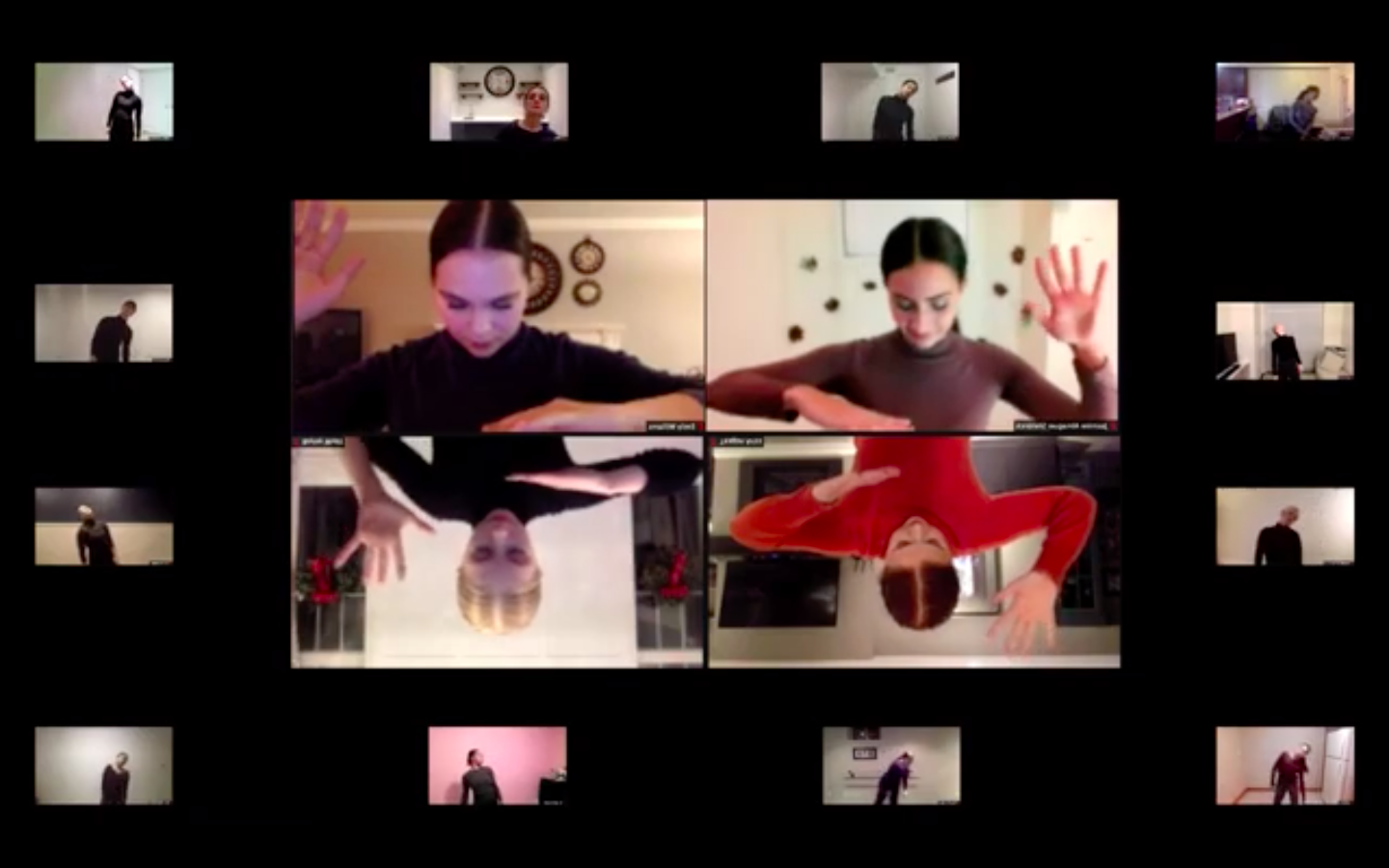Dance Innovations 2020: Detail and Distance — Extraordinary Works for Extraordinary Times lives up to its title as an extraordinary series of digitally performed dance pieces. The three series streamed on YouTube between November 25 to 27 and include performances from third-year dance performance students, works from fourth-year dance choreography students, and the York Dance Ensemble. The performances will be available online for the following week.
The first two evenings, Series A – Detail, and Series B – Distance features the original new works of fourth year dance-choreography students. The pieces are diverse in form and content, and capture an element of the complexities of our current moment each in their own way.
Typically, these performances would take place live for an audience in a studio theatre on campus. As with most other university functions, these performances had to move online. With there already being a class devoted to video performance in the department, questions about the focus of an entirely online choreography class arose.
Assistant Professor Susan Lee, fourth-year choreography course director and artistic director of Dance Innovations, says: “We thought that in keeping with the spirit of live performance, our choreography students would create works for cameras that were performed in one shot with no editing. The performers, camera work, and lighting design you see in these videos are performing ‘live’ for the camera at that instance.”
Teagan Ariss, a fourth-year dance student, performs her own work “Staircase” as part of Series A. “Choreographing for the camera is a new challenge,” Ariss says. “When the dance is confined to a frame, you really control what the audience sees and how they see it. A lot of times I found myself doing something that I thought was interesting and then after watching a video of it, found out that it didn’t look anything like I thought it would.”
Fourth-year dance student Carly MacDougall’s work is also part of Series A. Speaking to the process of choreographing over Zoom, she says: “I learned that creating dance over Zoom required space for new logistics within my choreography. I found that I had to add a lot of pauses and shifts in quality so that it was easy to watch three screens at once. I also didn’t put a lot of pressure on myself and kept saying ‘I just want to have a good time’ which translated to my final work, ‘Individual Party.’”
Series C involves third-year dance performance students led by course director Modesto Amegago as well as the York Dance Ensemble helmed by Susan Lee. Both pieces performed by the York Dance Ensemble, “Slap Happy” and “Time Has No Place Here,” were standout works of the entire series, both from a dance and digital media perspective.
“Working with 16 dance artists online is challenging in itself. If just one connection is lost when we are using Zoom things get messed up and a great deal of flexibility is critical.”
Associate Professor in the Department of Computational Arts Donald Sinclair worked with Susan Lee and the ensemble writing the software used to create “Slap Happy” and run “Time Has No Place Here” live. “Working with 16 dance artists online is challenging in itself. If just one connection is lost when we are using Zoom things get messed up and a great deal of flexibility is critical,” Sinclair says of the project.
Speaking further on the dance-specific challenges of the online creation process, he adds that “dance works are typically developed with a bunch of people in the same room through moving and talking. In this format we end up sitting way too much and this is challenging for bodies to get up and keep moving.”
Third-year dance student Emily Williams describes the collaboration with the digital media program on the pieces performed by the ensemble from a dancer’s perspective.
“We began our one piece ‘Slap Happy’ about a month ago with learning the rhythms we would be dancing to, and then began to learn and collaborate on choreography and eventually perfecting and filming the piece,” Williams says. “We then started the creation process for our live Zoom piece, ‘Time Has No Place Here,’ in collaboration with digital media.” Overall, Williams says this was “a unique experience — learning and collaborating on choreography over Zoom.”
Ariss, who also performed as part of the York Dance Ensemble, talks about the challenges of this unique experience. “I honestly found it challenging to dance with people over Zoom because it is hard to connect through the computer screen,” she says. “Since we are not in the same room we cannot sense each other’s energy in subtle ways that we normally would be able to.”
Professor Susan Lee comments further on the challenges of our current moment in the world of dance: “This is a challenging time to be a person and an artist. The global pandemic has changed fundamentally how we live and communicate. It has been particularly challenging for the art form of dance. Dance lives in the body and requires specialized spaces in which we move and breathe together, and touch. We have seen the impact of physical distancing on our beloved dance in the ways we train, the ways we form community, and the ways we create and present our art.”
She adds that she is incredibly proud of her students and their work. “I want the audiences to appreciate the artistry, resilience, and creativity of our dance students who have made touching works about dance creation during the pandemic.”
To view the video of Dance Innovations 2020 or for information on upcoming performances, visit https://dance.ampd.yorku.ca/events/. For more information about dance at York follow @YorkDance, and about the ensemble follow @YorkDanceEnsemble.


